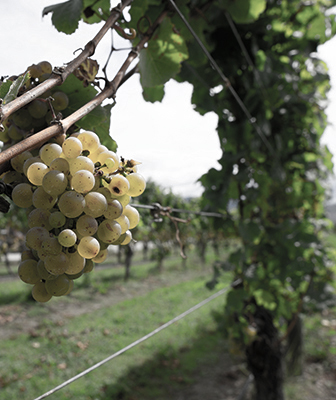Shannon Farm takes its name from the original farm owners and holds special historical significance for many locals.
Shannon Farm had been in the prominent local Ritchie family from 1882 till 1944 before selling on to Crabbe & Sons then the Leyser’s in the 1970’s.
Originally, Shannon Farm was part of an area known as The Commonage, which was essentially an area for the community to graze their animals or have garden plots.
The land has always been used as pasture in one way or another, but more recently as stone fruit orchards.

Sourced from LINZ. Crown Copyright reserved.
Len Riggir

Sourced from Hocken Collections, Uāre Taoka o Hakena, University of Otago.

Sourced from Hocken Collections, Uāre Taoka o Hakena, University of Otago.
Gold was discovered in the Cromwell Gorge by two miners called Horatio Hartley and Christopher Reilly in 1862.
As soon as word spread (and it did!), the gold rush began and the mining town of The Junction (named after its physical location of where the Kawerau and Clutha Rivers meet) was founded. One year later, the small town was renamed Cromwell after the English leader Oliver Cromwell.
Goldmining by individual miners soon turned into large scale mechanical dredging and by the early 1900’s the gold rush did eventually come to an end, but not before miners had spread out across Central Otago. You can still find remnants of its past in settlements such as Bannockburn and Bendigo.
Thomas Bracken
After the miners left, Cromwell soon established itself as a town servicing the local community.
Anyone that has travelled to Central Otago would be familiar with the unique rocky and semi-arid land. It is this land, which gave rise to the next boom in Cromwell’s history – stone-fruit orchards and vineyards.
With its Mediterranean climate and free-draining soils, the resolute locals soon discovered that stone-fruit and later grapes producing award-winning wines, thrived in the area.


The township of Cromwell was forever changed in 1992 when the dam at Clyde (25kms south) was completed and Lake Dunstan was formed.
Cromwell’s main street was flooded as a direct result of the dam, so a new town centre was created - but not all was lost. Some original buildings which dated back to the gold rush were saved and relocated to avoid being devoured by the rising lake levels. This is now called Cromwell Old Town and is a true gem of a place to visit thanks to the local community.

Sourced from Hocken Collections, Uāre Taoka o Hakena, University of Otago.